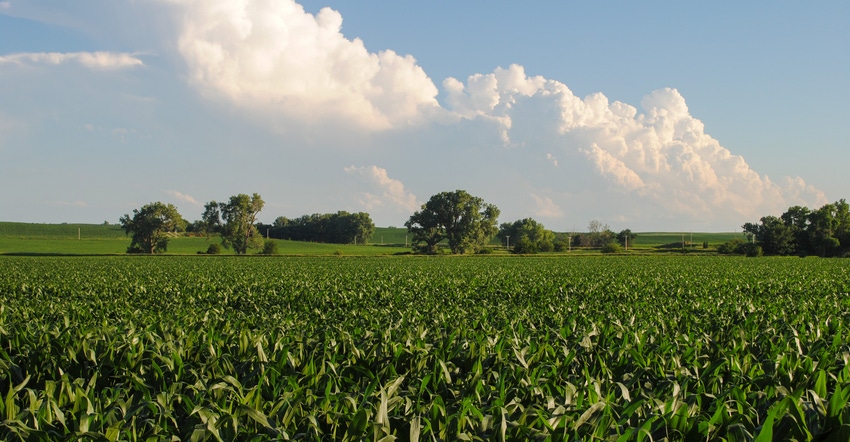
Times are tough on the farm and ranch. No one will dispute that after a year of rough weather, lower commodity prices, farm stress that has been borne out in bankruptcies, and sadly, increased farm suicides. Top all of that off with recent COVID-19 uncertainties and quarantines and you have a recipe for extreme anxiety and depression for those who work the land.
These hard times are nothing new to Mike Rosman, a Harlan, Iowa, farmer and clinical psychologist who spoke at the South Dakota Farm and Ranch Stress Summit last fall.
Related: Complete coronavirus coverage
“When we talk about farm stress, we are also talking about anyone who is a producer of food and fiber, including farmers and ranchers, but also farm workers, migrant laborers, foresters, hunters and fishers,” Rosman said. “This stress comes from the threatened loss of important resources needed to produce essentials for life, like food, especially the land, but including equipment, livestock, facilities, human capital and labor, and all the financial underpinnings.
“Any threats to those necessities to farm successfully make us hyper-alert and overreactive.”
Rosman said farmers are worried about COVID-19 and family health, as well as the Renewable Fuel Standard, loss of markets in China and lack of control over consumer preferences, among other major challenges.
“And when farmers are stressed, the communities that depend on farmers are stressed,” he said.
Comparing the current financial challenges with the farm crisis of the 1980s, Rosman noted that farm suicides are at a higher rate than they have been in a long time.
“We have the worst rate of bankruptcies and foreclosures since the 1980s,” he said.
“COVID-19 is a new and unexpected factor that increases the uncertainty farmers feel,” Rosman said in a recent interview with Dakota Farmer. “We have to rely on what has been demonstrated to help farmers cope with distress in past unpredictable times.
“There is good news too,” Rosman said. “We have not lost nearly as many farmers and ranchers financially as we did in the 1980s, when nearly 20% of farmers ceased production.
“Along with the ongoing continual consolidation of agriculture, as everyone knows, there has simultaneously been an emergence of many small operations. These small farms have often been focused on regenerative or sustainable production, trying to put necessities back into the soil and water needed to produce food.”
More support for farmers in need
Rosman said that there is an entire generation that wants to farm.
“While it can be stressful when sons and daughters aren’t sure if they want to farm, for those who do want to start, there are more sources of credit and insurance than in the 1980s,” he said.
Communities have more supports to keep people around, and farm crisis hotlines, agricultural safety and health program that have helped reduce the death rate from the physical causes of on-farm mortality by half. Child deaths on the farm have decreased even more substantially.
“We have a better understanding of behavioral health than we ever had in previous generations,” Rosman said. “Farm media like farm magazines, radio and television have helped bring information to farmers and ranchers, and our knowledge of behavioral health has grown by leaps and bounds.”
There are notably more resources to help farmers understand and manage mental health challenges, he added.
“Farm people are more likely today to be open to reaching out for help,” Rosman said. They are more likely to understand the connection between their behavioral health and the productivity of their livestock and crops. They want to be in optimal psychological shape, as well as in good physical and financial condition to continue farming.
He cited studies in Sweden about how managers and employees in dairies and cattle feedlots who implemented manager-employee meetings and professional counseling when necessary.
“They reported lower somatic cell counts in the milk their cows produced, and the dairies and feedlots had fewer veterinary visits than those whose managers and employees reported more personal distress,” Rosman said. “It is important for us to note, when we are overly tense or depressed, it affects our decision making, and it impacts how we are able to focus our whole attention on the operation.”
When farmers learn to manage their behavioral health, it is a step in the right direction, he said. This includes making sure producers get proper sleep, share concerns with family members who need to know, take time to talk and pray, and bring others into a management team.
“I’ve found that farm people in my neighboring towns cut out farm articles from newspapers and magazines and take them to coffee and talk about them,” Rosman said. “They are talking about their behavioral health like they talk about physical conditions such as diabetes.”
In a support group that Rosman coordinated for many years, farmers and ranchers not only talked openly about what they didn’t understand, but they also revealed their emotions.
“When they saw each other, they gave each other man-hugs and often there were tears from men as they talked,” Rosman said. “I couldn’t have imagined that happening 25 years ago.”
Read more about:
Covid 19About the Author(s)
You May Also Like






